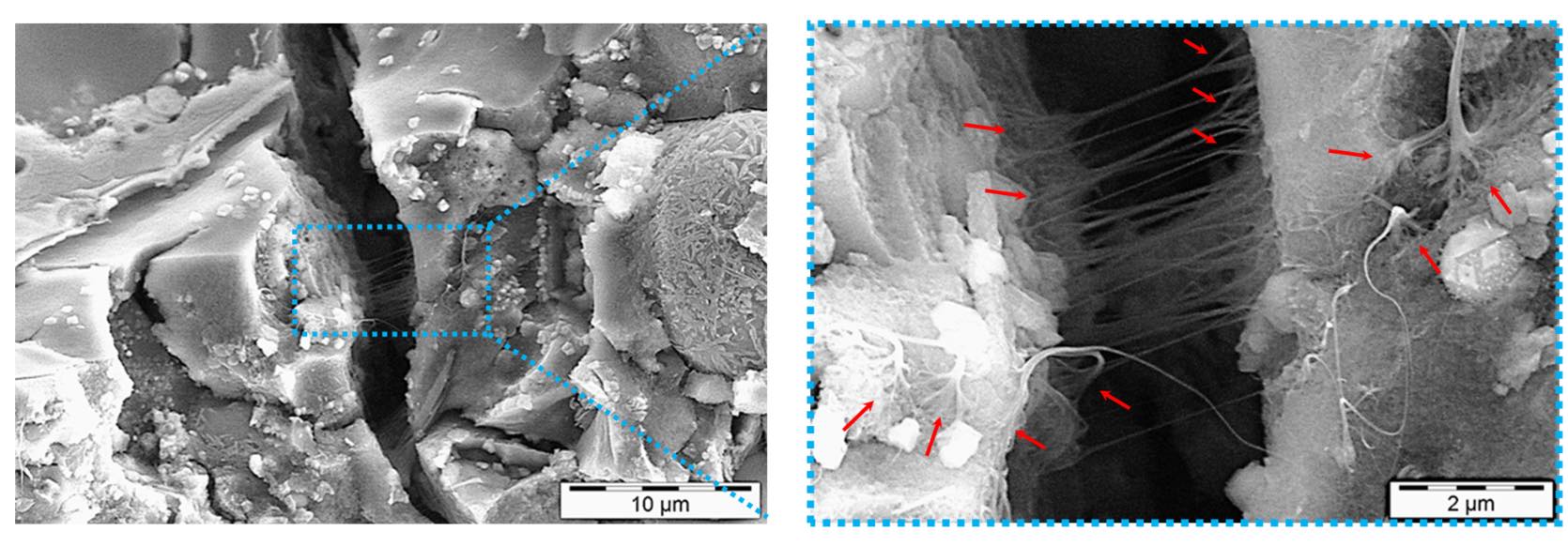A waste-originated one-part alkali-activated nanocomposite is introduced herein as a novel thermoelectric material. For this purpose, single-walled carbon nanotubes (SWCNTs) were utilized as nanoinclusions to create an electrically conductive network within the investigated alkali-activated construction material. Thermoelectric and microstructure characteristics of SWCNT-alkali-activated nanocomposites were assessed after 28 days. Nanocomposites with 1.0 wt.% SWCNTs exhibited a multifunctional behavior, a combination of structural load-bearing, electrical conductivity, and thermoelectric response. These nanocomposites (1.0 wt.%) achieved the highest thermoelectric performance in terms of power factor (PF), compared to the lower SWCNTs’ incorporations, namely 0.1 and 0.5 wt.%. The measured electrical conductivity (σ) and Seebeck coefficient (S) were 1660 S·m−1 and 15.8 µV·K−1, respectively, which led to a power factor of 0.414 μW·m−1·K−2. Consequently, they have been utilized as the building block of a thermoelectric generator (TEG) device, which demonstrated a maximum power output (Pout) of 0.695 µW, with a power density (PD) of 372 nW·m−2, upon exposure to a temperature gradient of 60 K. The presented SWCNT-alkali-activated nanocomposites could establish the pathway towards waste thermal energy harvesting and future sustainable civil engineering structures.

A waste-originated one-part alkali-activated nanocomposite is introduced herein as a novel thermoelectric material. For this purpose, single-walled carbon nanotubes (SWCNTs) were utilized as nanoinclusions to create an electrically conductive network within the investigated alkali-activated construction material. Thermoelectric and microstructure characteristics of SWCNT-alkali-activated nanocomposites were assessed after 28 days. Nanocomposites with 1.0 wt.% SWCNTs exhibited a multifunctional behavior, a combination of structural load-bearing, electrical conductivity, and thermoelectric response. These nanocomposites (1.0 wt.%) achieved the highest thermoelectric performance in terms of power factor (PF), compared to the lower SWCNTs’ incorporations, namely 0.1 and 0.5 wt.%. The measured electrical conductivity (σ) and Seebeck coefficient (S) were 1660 S·m−1 and 15.8 µV·K−1, respectively, which led to a power factor of 0.414 μW·m−1·K−2. Consequently, they have been utilized as the building block of a thermoelectric generator (TEG) device, which demonstrated a maximum power output (Pout) of 0.695 µW, with a power density (PD) of 372 nW·m−2, upon exposure to a temperature gradient of 60 K. The presented SWCNT-alkali-activated nanocomposites could establish the pathway towards waste thermal energy harvesting and future sustainable civil engineering structures.
